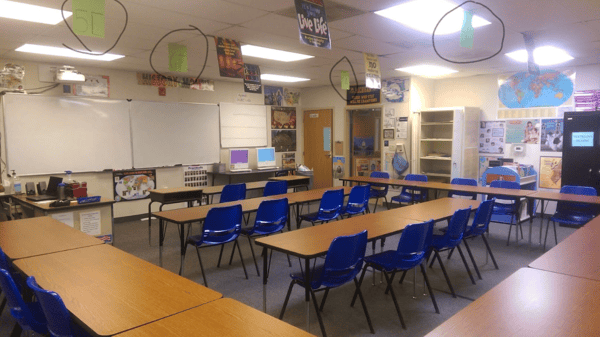7 October 2022
How to use jigsaw activities in your classroom
Matthew Bielak M.Ed.
Former Middle & High School Teacher; current DT+ Sales Executive
Jigsaw activities have been around for decades, and are a great strategy to accelerate learning and reduce the amount of time you have to lead direct instruction as a teacher. This method is easy to learn, implement, weave with other lesson activities, and great for keeping students engaged while the teacher(s) can rotate around the classroom.
With a little bit of planning, they can free you up to work with small groups or even finish some grading while students are on task.
Here’s a quick recap of two great general structures of a jigsaw activity:
Home Groups —> Expert Groups —> Home Groups
- Take a large topic (e.g. plot summary of Romeo and Juliet) and break it into smaller chunks (e.g. act summaries).
- Divide students into 4-6 person groups labelled the “home groups”.
- Assign a different reading selection/task to each student in each home group.
- Form new “expert groups” by having students get up and connect with members of other home groups that had the same reading selection.
- Give time for the expert groups to discuss their reading selection and prepare to return to the home groups to teach their own section.
- Students return to their home groups and explain their section to the other students.
Expert Groups —> Teaching Groups —> Expert Groups
- Take a large topic (e.g. plot summary of Romeo and Juliet) and break it into smaller chunks (e.g. act summaries).
- Divide students into 4-6 person groups labelled the “expert groups”.
- Assign a reading selection/task to each expert group (e.g. Group 1 gets Act 1, etc).
- Form new “teaching groups” by having students get up and join a new group that includes one member from each expert group.
- Give time for the new groups to discuss and teach their reading selection.
- Students return to their expert groups and review what they’ve learned to make sure everyone is on the same page.

Digital Theatre+ has a number of resources that can make the planning piece really easy, so you can sort out groups and get students into a task without scouring the internet for reading selections or clips for students to study.
Here are a few ideas of how to take a large topic, break it into pieces for students to master, and then subsequently teach it to classmates:
- Act summaries of a dramatic text from any Unlocked study guide on Digital Theatre+. For example, take the Unlocked Study Guide: The Crucible and head to the Plot Summaries on page 10.
- Use the character cards from the Unlocked Study Guide for any dramatic text you are studying.
- Assign a certain key scene/speech for students to study from different production companies. For example, Act II, Scene I from Julius Caesar.
- Bonus opportunity to mix in audio productions or graphic novels instead of just the live theatrical captures!
- Assign Concise Introductions for a wide variety of core topics and practitioners, covering history, context, theory, and practice.
Other best practices for classroom management and engagement
- Set a timer on the board for each stage of the activity.
- Rotate around the room to check for understanding and classroom management.
- Have a graphic organizer ready for students to be taking notes/writing summaries.
- Assign roles within the first group such as leader, evidence finder, presenter…
- Manage the transitions of moving students from group to group by hanging signs on your ceiling/wall that have a letter and a number on them and evenly spread them out throughout your classroom e.g. 1A, 2B, 3C, etc.

- You can assign home groups to meet at the number locations and the second set of groups to meet according to the letter location
- This is also a great time to utilize a co-teacher!
Related blogs
Lorraine Hansberry's A Raisin in the Sun: Now Available on DT+
Exclusive license granted by Joi Gresham and the Lorraine Hansberry Literary Trust (LHLT) for...
Read moreCelebrate All Students This Season: 4 Creative Classroom Strategies
As the holiday season approaches, many educators find themselves in a bit of a conundrum: How do I...
Read moreHow to fund a subscription to Digital Theatre+
What would you do with an unlimited departmental budget?
Read moreGet the latest teaching tips straight to your inbox
Explore free lesson ideas and inspiration, education news, teaching trends and much more by signing up to regular blog updates!





%20(10).png)